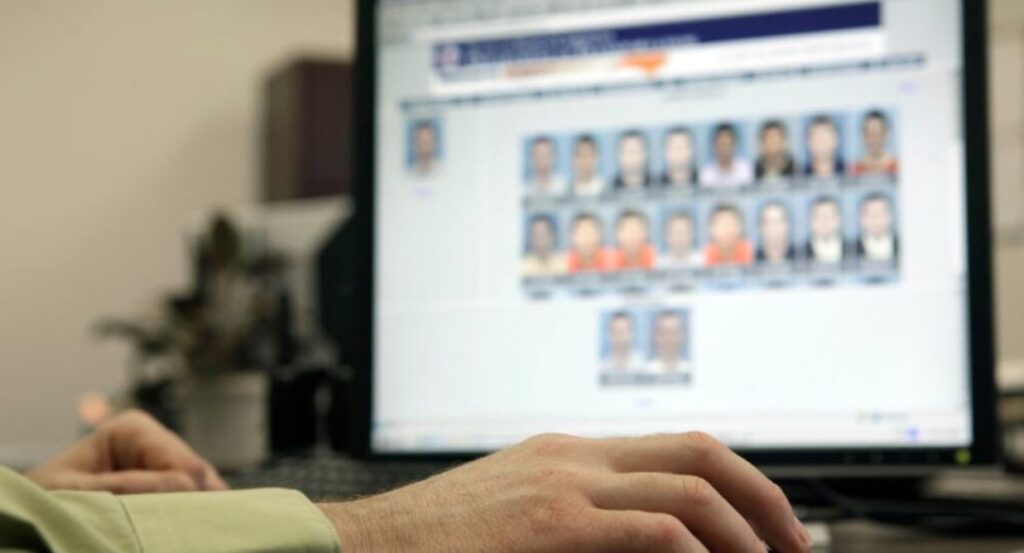Germany is among the first European nations to push at the seams of the AI Act, with a row brewing over the Federal Ministry of the Interior’s plan to allow police use of facial recognition to identify terrorists.
A draft bill introduced by Minister of the Interior Nancy Faeser proposes comparing photos or screenshots from violent video footage to images posted to social media with biometrics to determine the whereabouts of suspects or identity unknown criminals, Der Spiegel reports. Several of Germany’s policing laws would have to change to accommodate the system.
A report from RedaktionsNetzwerk Deutschland (RND) quotes deputy chairman of the Green parliamentary group Konstantin von Notz, who believes the use of facial recognition raises “profound constitutional questions.”
The Greens “expressly share the desire to consistently combat terrorism,” says von Notz. “However, it should first be noted that the coalition agreement contains a clear rejection of biometric recording for surveillance purposes in public spaces, and for good reason.” A 2020 plan to deploy live facial recognition at 135 train stations and 14 airports was scuppered over concerns about accuracy, and the Greens worry about surveillance creep and the potential for misuse should the new draft law go ahead.
For now, as the proposal awaits approval from the Cabinet and the Bundestag, Marcel Emmerich, chairman of the Green parliamentary group, says the Greens are “examining the intensity of the intervention very carefully” and that they “reject automated and biometric facial recognition because they massively curtail fundamental rights.”
The Ministry says concern about algorithmic mass surveillance are unfounded, since real-time facial recognition in public spaces is not part of the plan. Part of the motivation for pursuing the biometric system came from a recent case in which Canadian journalist Michael Colborne identified a former member of the Red Army Faction (RAF), labeled as a terrorist group by the German government, using Facebook photos and facial recognition software from PimEyes.
Daniela Klette, who had been wanted for 30 years, was arrested in late February for participating in three RAF attacks between February 1990 and March 1993. The successful use of facial recognition in her apprehension has whetted law enforcement’s appetite for more, with the Ministry noting that police could use it to find Islamist militants.
But, says von Notz, “even those who voluntarily seek out the public nature of a social network do not thereby give up their constitutionally guaranteed rights.”
The Federation of German Detectives (BDK), meanwhile, has thrown its full support behind the Ministry’s proposal, arguing “it cannot be the case that police authorities have to avoid using the Internet when investigating unknown suspects, while investigative research networks can use it.” That said, it adds a disclaimer: “We do not want conditions like those in China,” where facial recognition has been used to crack down on public protests and maintain authoritarian control.
Police love FRT but AI Act will ban databases of public biometric data
Facial recognition has been tested (and criticized) in Berlin. But the push from police to allow use of the biometric technology in criminal investigations has been strongest in the state of Saxony, where law enforcement reportedly deployed a surveillance system called Personal Identification System (PerIS), created by Opto Precision, without telling the local data protection agency. The Saxony department has also reportedly performed facial recognition searches for other agencies and police forces – a strategy for skirting regulations that has also been a problem in the U.S.
The PerIS system scans license plates of passing vehicles as well as facial images of drivers and passengers. It can reportedly process facial images “with a time delay of a few seconds.”
Saxony’s data protection office said the police who used the system did not submit a data protection impact assessment, as is required. Moreover, critics from the state’s Pirate Party argue that the legal regulations for biometric video surveillance expired at the end of 2023, making the police deployment unconstitutional.
In February 2025, articles in the AI Act will go into effect, banning the use of data from the public Internet for biometric databases. This will block companies like PimEyes and Clearview AI, which rely on freely accessible images from social networks and other sources to build their biometric databases, from operating in the EU.
It will also mean police cannot develop their own database of images scraped from the Internet. But, given the enthusiasm with which law enforcement around the world has embraced facial recognition tools, there is likely to be a continued push for exceptions that will allow them to keep using it.
Source: Biometric Update
Joel McConvey is a creative content producer and digital specialist who helps people and organizations tell their story across platforms, and meet the challenges of a digital culture that changes quickly and often. Reach him on Twitter @jrmcconvey.
Become a Patron!
Or support us at SubscribeStar
Donate cryptocurrency HERE
Subscribe to Activist Post for truth, peace, and freedom news. Follow us on Telegram, HIVE, Minds, MeWe, Twitter – X and Gab.
Provide, Protect and Profit from what’s coming! Get a free issue of Counter Markets today.


Be the first to comment on "Draft bill allowing German police to search web with facial recognition panned"